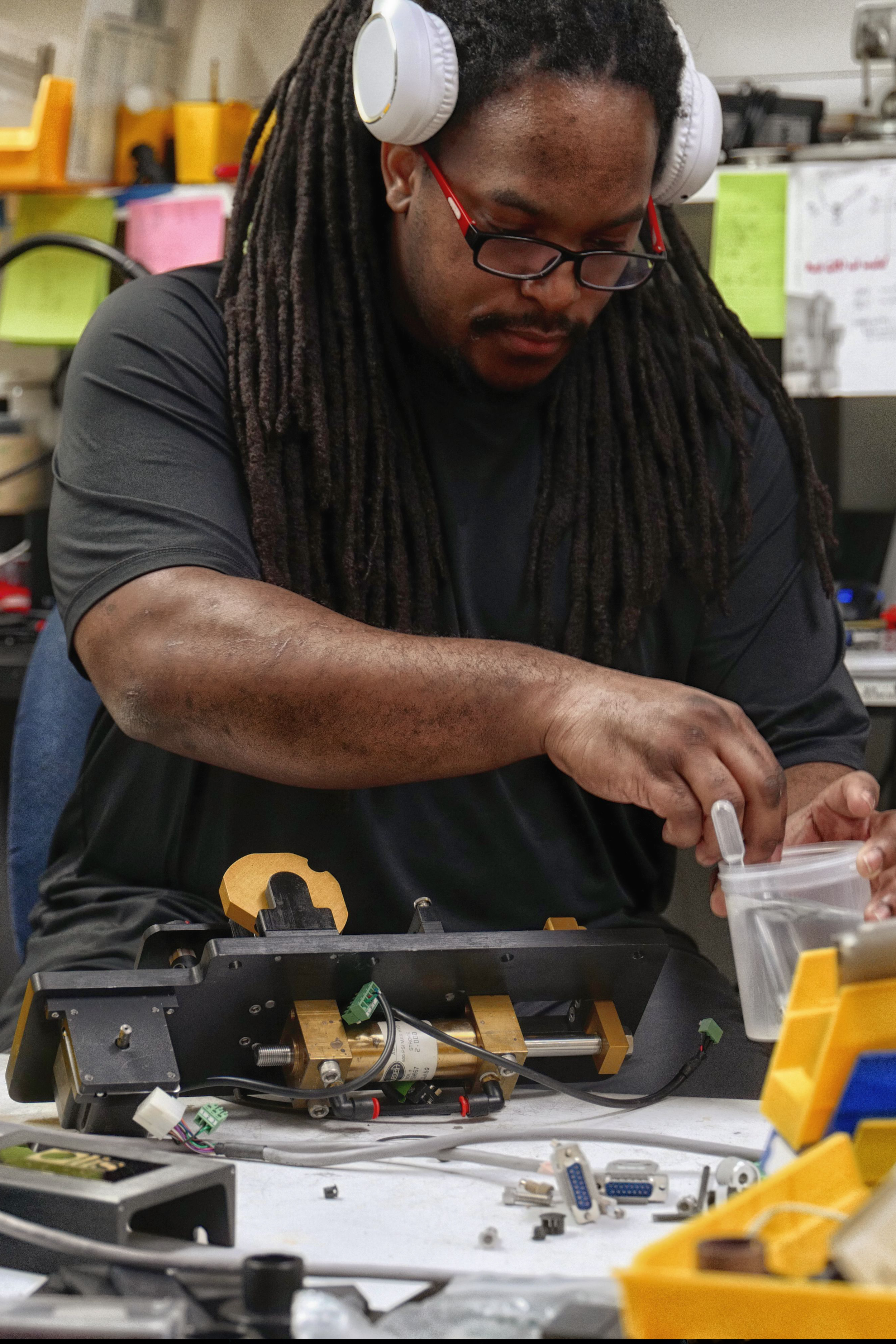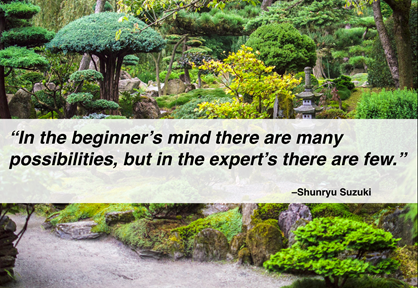Spectrophotometers Fundamentals Explained
Wiki Article
The Ultimate Guide To Uv/vis
Table of ContentsA Biased View of SpectrophotometersThe 15-Second Trick For Circularly Polarized LuminescenceGetting My Spectrophotometers To WorkFascination About SpectrophotometersGetting My Circular Dichroism To WorkIndicators on Circular Dichroism You Need To KnowThe 7-Minute Rule for Uv/visThe Buzz on Circularly Polarized LuminescenceThe smart Trick of Circularly Polarized Luminescence That Nobody is DiscussingThe Buzz on Circular DichroismSpectrophotometers Can Be Fun For AnyoneThe Best Strategy To Use For Uv/vis/nirHow Circularly Polarized Luminescence can Save You Time, Stress, and Money.
It is then scanned through the sample and the referral services. Portions of the occurrence wavelengths are transferred through, or shown from, the sample and the referral. Electronic circuits convert the relative currents into direct transmission portions and/or absorbance/concentration worths.The transmission of a referral substance is set as a baseline (information) value, so the transmission of all other compounds are recorded relative to the initial "zeroed" compound. The spectrophotometer then transforms the transmission ratio into 'absorbency', the concentration of specific components of the test sample relative to the preliminary compound.
Considering that samples in these applications are not easily offered in large quantities, they are especially suited to being evaluated in this non-destructive method. In addition, valuable sample can be saved by making use of a micro-volume platform where just 1u, L of sample is required for complete analyses. A short description of the procedure of spectrophotometry includes comparing the absorbency of a blank sample that does not include a colored substance to a sample that contains a colored compound.
Some Of Uv/vis/nir
In biochemical experiments, a chemical and/or physical home is selected and the treatment that is used specifies to that home in order to derive more details about the sample, such as the amount, purity, enzyme activity, etc. Spectrophotometry can be used for a number of strategies such as figuring out optimum wavelength absorbance of samples, identifying optimal p, H for absorbance of samples, figuring out concentrations of unknown samples, and determining the p, Ka of different samples.: 21119 Spectrophotometry is likewise a helpful procedure for protein purification and can also be used as a technique to develop optical assays of a compound.It is possible to understand the concentrations of a 2 part mix utilizing the absorption spectra of the basic solutions of each part. To do this, it is necessary to know the termination coefficient of this mix at 2 wave lengths and the termination coefficients of options that include the known weights of the two elements.

Top Guidelines Of Uv/vis
Many spectrophotometers are utilized in the UV and noticeable regions of the spectrum, and a few of these instruments likewise operate into the near-infrared region also. The concentration of a protein can be estimated by measuring the OD at 280 nm due to the presence of tryptophan, tyrosine and phenylalanine (https://www.callupcontact.com/b/businessprofile/Olis_Clarity/8903776).Nucleic acid contamination can also interfere. This method requires a spectrophotometer efficient in measuring in the UV area with quartz cuvettes.: 135 Ultraviolet-visible (UV-vis) spectroscopy involves energy levels that thrill electronic transitions. Absorption of UV-vis light excites particles that are in ground-states to their excited-states. Noticeable region 400700 nm spectrophotometry is used thoroughly in colorimetry science.
20. 8 O.D. Ink producers, printing companies, fabrics vendors, and much more, need the information offered through colorimetry. They take readings in the area of every 520 nanometers along the noticeable area, and produce a spectral reflectance curve or a data stream for alternative discussions. These curves can be utilized to evaluate a new batch of colorant to examine if it makes a match to requirements, e.
The Of Circularly Polarized Luminescence
Traditional noticeable region spectrophotometers can not detect if a colorant or the base product has fluorescence. This can make it difficult to manage color concerns if for example several of the printing inks is fluorescent. Where a colorant includes fluorescence, a bi-spectral fluorescent spectrophotometer is utilized (https://www.brownbook.net/business/52441542/olis-clarity/). There are 2 major setups for visual spectrum spectrophotometers, d/8 (round) and 0/45.Researchers use this instrument to measure the quantity of compounds in a sample. If the substance is more focused more light will be soaked up Web Site by the sample; within little varieties, the Beer, Lambert law holds and the absorbance between samples vary with concentration linearly. In the case of printing measurements 2 alternative settings are commonly utilized- without/with uv filter to control better the impact of uv brighteners within the paper stock.
The 9-Minute Rule for Uv/vis/nir
Some applications need small volume measurements which can be performed with micro-volume platforms. As explained in the applications section, spectrophotometry can be used in both qualitative and quantitative analysis of DNA, RNA, and proteins. Qualitative analysis can be used and spectrophotometers are utilized to record spectra of substances by scanning broad wavelength regions to figure out the absorbance properties (the intensity of the color) of the compound at each wavelength.
Not known Details About Circular Dichroism
One major element is the kind of photosensors that are offered for various spectral areas, however infrared measurement is likewise tough due to the fact that practically whatever discharges IR as thermal radiation, particularly at wavelengths beyond about 5 m. Another issue is that many products such as glass and plastic soak up infrared, making it incompatible as an optical medium.Samples for IR spectrophotometry may be smeared between two discs of potassium bromide or ground with potassium bromide and pushed into a pellet. Where aqueous services are to be determined, insoluble silver chloride is utilized to construct the cell. Spectroradiometers, which run nearly like the noticeable area spectrophotometers, are developed to determine the spectral density of illuminants. 2013. p. 13. Allen, DW; Cooksey, C; Tsai, BK (Nov 13, 2009). "Spectrophotometry". Retrieved Dec 23, 2018. Ninfa AJ, Ballou DP, Benore M (2010 ). Essential Lab Methods for Biochemistry and Biotechnology (second ed.). Hoboken: Wiley & Sons. ISBN 9780470087664. OCLC 488246403. Schwedt G (1997 ). The vital guide to analytical chemistry.
Oke, J. B.; Gunn, J. E.
The Facts About Uv/vis/nir Revealed

Ninfa AJ, Ballou DP, Benore M (2015 ). Fundamental Lab Approaches for Biochemistry and Biotechnology (3, rev. ed.). circularly polarized luminescence. Lab Devices.
The Definitive Guide to Circular Dichroism
"Applied Spectrophotometry: Analysis of a Biochemical Mixture". Biochemistry and Molecular Biology Education. Journal of Biochemistry Education.Things about Spectrophotometers
U.S. Department of Commerce National Bureau of Standards special publication; 378. Washington, D.C.: U.S. National Bureau of Standards.The process begins with a controlled source of light that lights up the evaluated sample. In the case of reflection, as this light communicates with the sample, some is soaked up or released. The released light journeys to the detector, which is examined, measured, and provided as industry-standard color scales and indices.
All terms are examined over the noticeable spectrum from 400 to 700 nm. In the case of transmission, when the light connects with the sample, it is either soaked up, shown, or transferred.
3 Simple Techniques For Uv/vis/nir
Examples include APHA (American Public Health Association) for watercolor and purity analysis, ASTM D1500 for petrochemical color analysis, edible oil indices used in food, and color analyses of beverages. All terms are evaluated over the visible spectrum from 400 to 700 nm.Image Credit: Matej Kastelic/ Dr. Arnold J. Beckman and his associates at the National Technologies Laboratories first developed the spectrophotometer in 1940. In 1935 Beckman established the company, and the discovery of the spectrophotometer was their most ground-breaking invention. Dr. Bruce Merrifield, a Nobel prize-winning biochemist, stated that the creation of the spectrophotometer was "most likely the most important instrument ever established towards the development of bioscience." Before the discovery of the spectrophotometer, chemical analyses took weeks to finish, with 25% accuracy.
The Ultimate Guide To Uv/vis/nir
99% accuracy. Gradually, scientists kept improving the spectrophotometer design to enhance its efficiency. The UV capabilities of the design B spectrophotometer were improved by replacing the glass prism with a quartz prism. Eventually, the Design DU was developed, consisting of a hydrogen light and other enhancements. This instrument was utilized in commercial laboratories, centers, and chemistry and biochemistry departments.Generally, a spectrophotometer is made up of 2 instruments, namely, a spectrometer and a photometer. A basic spectrophotometer consists of a light source, a monochromator, a collimator for straight light beam transmission, a cuvette to put a sample, and a photoelectric detector.
Getting The Uv/vis/nir To Work
There are various types of spectrophotometers in various shapes and sizes, each with its own function or performance. A spectrophotometer identifies how much light is reflected by chemical parts. circularly polarized luminescence. It measures the distinction in light strength based on the overall amount of light presented to a sample and the amount of beam that passes through the sample solution
As per the instrument's design, the sample is positioned between the spectrometer and the photometer. After the light is travelled through the sample, the photometer determines its intensity and displays the reading. A spectrophotometer is utilized to figure out the concentration of both colorless and colored solutes in a service. This instrument is used to determine the rate of a response.
Report this wiki page